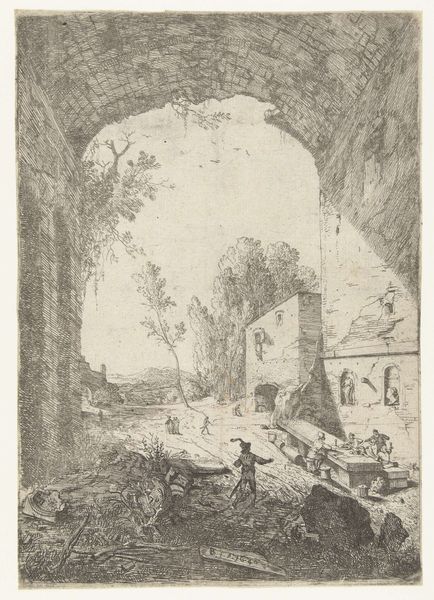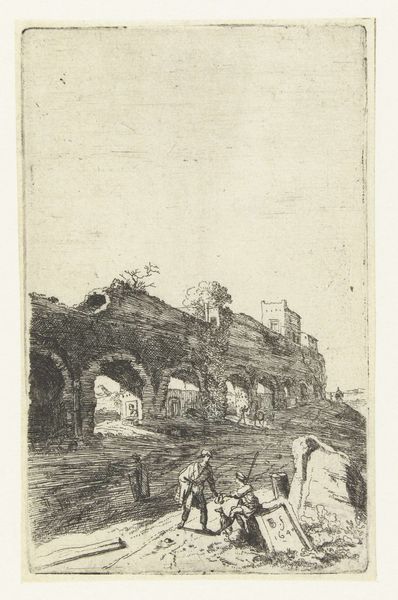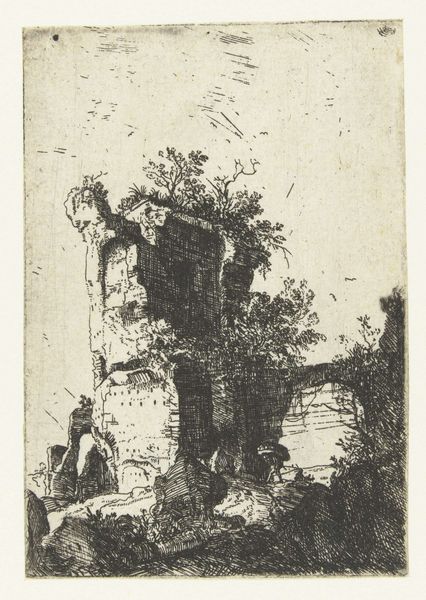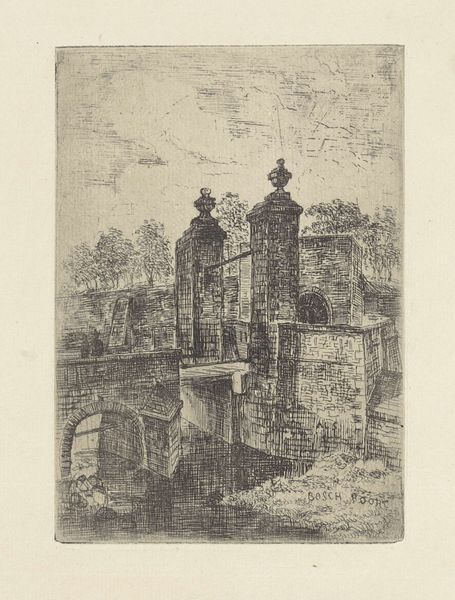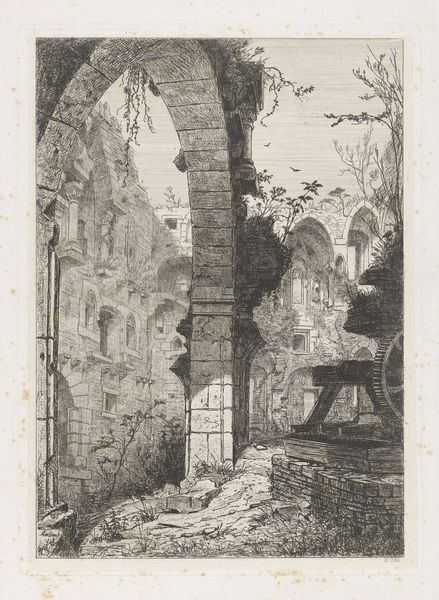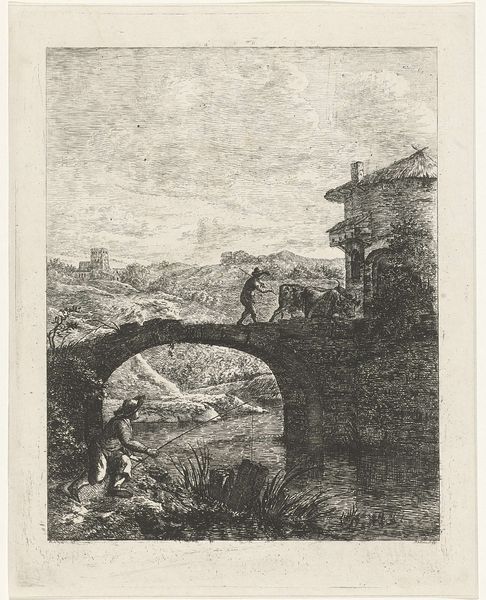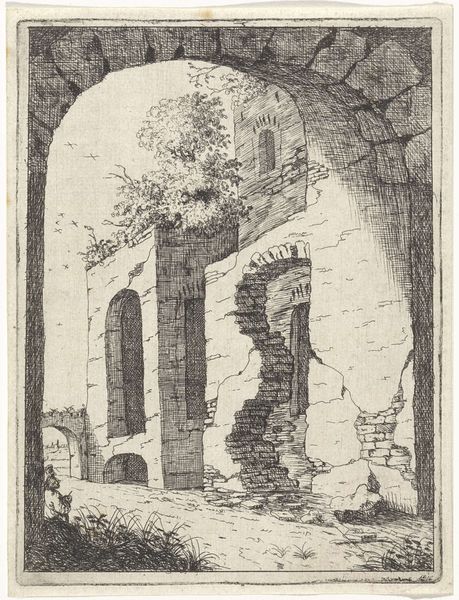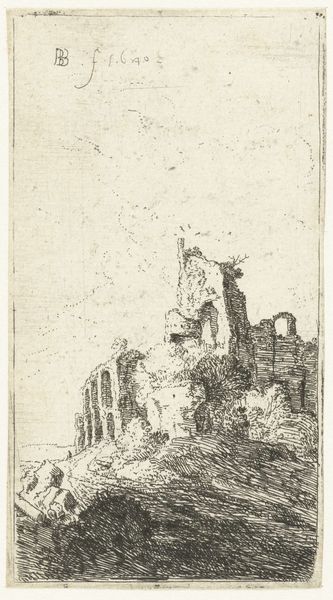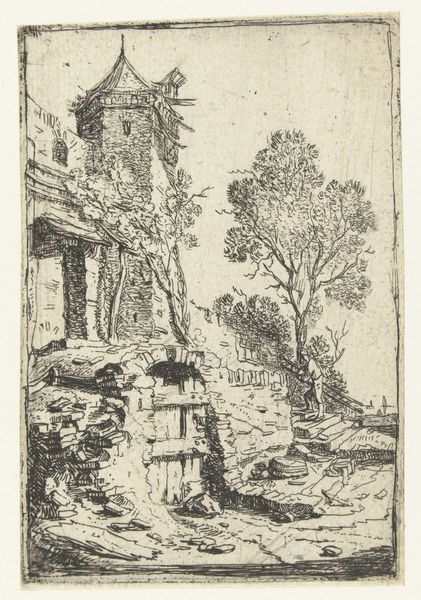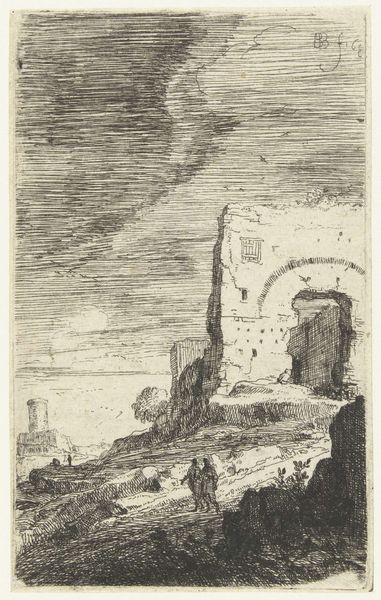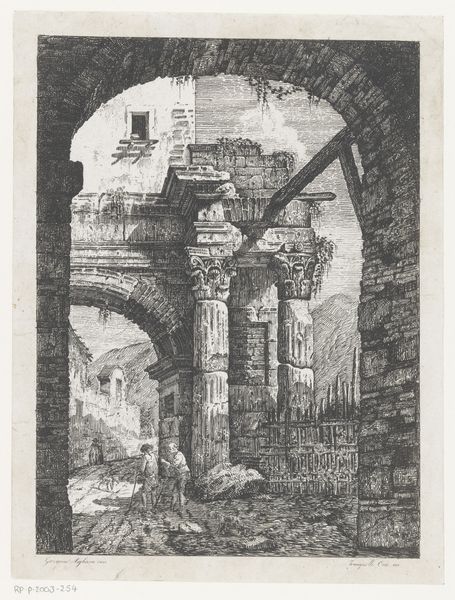
print, etching
#
baroque
#
dutch-golden-age
# print
#
etching
#
old engraving style
#
landscape
#
ancient-mediterranean
#
history-painting
Dimensions: height 104 mm, width 64 mm
Copyright: Rijks Museum: Open Domain
Editor: So, this is Bartholomeus Breenbergh's etching, "Ruïne van het Colosseum," made around 1639-1640. It's such a detailed print. What really strikes me is the contrast between the imposing, crumbling ruins and the tiny figures scattered around. It feels… melancholy. What do you see in this piece? Curator: It’s evocative, isn’t it? The Colosseum, a powerful symbol of Roman imperial might, is here rendered as a ruin. Breenbergh presents us not just with an architectural depiction, but also with a potent meditation on time, decay, and memory. Look closely—what feelings do these ruins stir in you? Editor: Definitely a sense of loss. Like, this was once the center of the world, and now nature is reclaiming it. Curator: Precisely! Consider the symbolic weight of ruins in the 17th century. They represented the transience of human achievement, the inevitable fading of even the grandest empires. Breenbergh is inviting us to contemplate the cultural memory embedded within these stones. And how do the figures in the foreground contribute to this? Editor: They seem… insignificant against the scale of the Colosseum, like reminders of humanity’s short lifespan compared to history. Curator: They emphasize the human connection, and what endures. Even as empires crumble, human lives, on a smaller scale, continue among the wreckage. The light is intriguing, wouldn’t you say? Almost as if hope is rekindled among loss. What has this prompted you to reconsider? Editor: I initially saw just the decay, but now I notice the subtle hints of resilience – both in the enduring structure and in the people moving through it. It’s not just about what's gone, but about what remains and the possibility of new beginnings. Curator: Indeed. The image beautifully balances a melancholic reflection on the past with a quiet affirmation of the human spirit's continuous presence and its own unfolding future. A poignant message, wouldn't you agree?
Comments
No comments
Be the first to comment and join the conversation on the ultimate creative platform.
